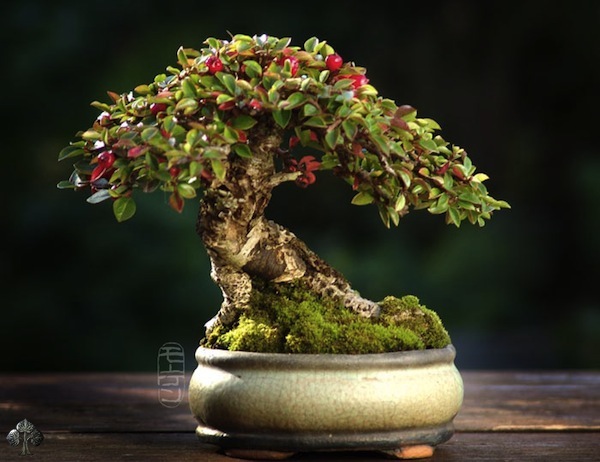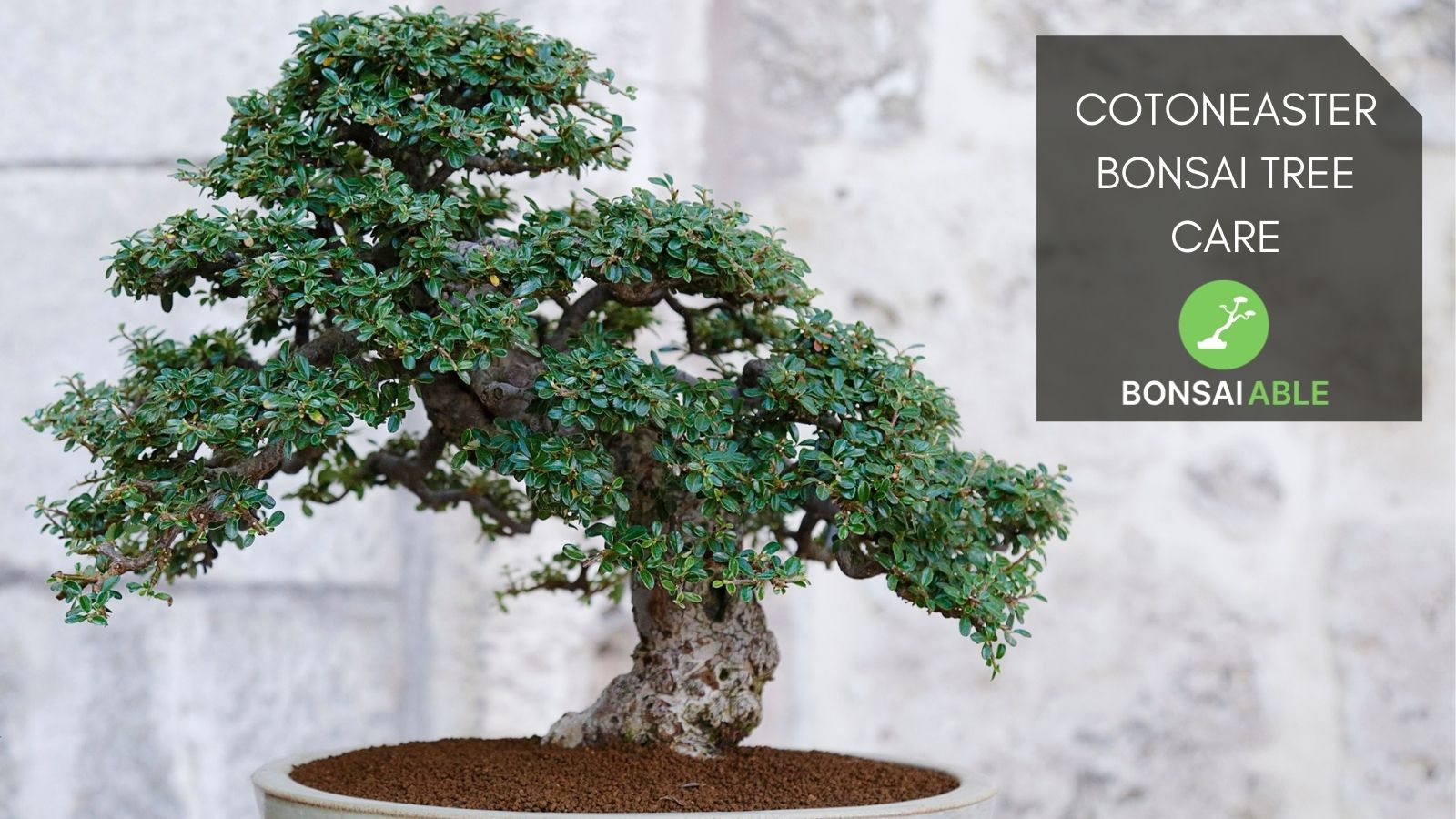Cotoneaster bonsai trees need bright sunlight, regular watering, and occasional pruning. Ensure good drainage to prevent root rot.
Cotoneaster bonsai trees are popular for their attractive foliage and berries. Native to temperate regions, they thrive in full sunlight. Regular watering is essential but avoid waterlogging. Good drainage is crucial to prevent root rot. Pruning helps maintain their shape and encourages new growth.
Fertilize sparingly to support their development. These trees are relatively hardy and can be grown both indoors and outdoors. Proper care ensures they remain healthy and vibrant, making them a beautiful addition to any bonsai collection. Their compact size and aesthetic appeal make them a favorite among bonsai enthusiasts.
Introduction To Cotoneaster Bonsai
Discover essential tips for Cotoneaster Bonsai tree care. Learn about proper watering, pruning, and positioning to keep your tree healthy and thriving. Enhance your bonsai skills with these expert guidelines.
History And Origin
The Cotoneaster bonsai tree comes from the rose family. It was first found in Asia and Europe. This plant became popular in the 19th century. Gardeners loved its small leaves and berries. Today, people all over the world grow Cotoneaster bonsai trees. These trees are admired for their beauty and ease of care.
Unique Characteristics
Cotoneaster bonsai trees have small, oval leaves. Their leaves stay green all year. These trees also produce tiny flowers. The flowers turn into bright red berries. The berries add color to the tree. Cotoneaster bonsai trees are hardy and can survive in many climates. They are also resistant to pests and diseases.
Choosing The Right Cotoneaster Species
Many people love the Cotoneaster horizontalis. This variety has a lovely spreading habit. Another favorite is the Cotoneaster microphyllus. It has tiny leaves and pretty berries. The Cotoneaster dammeri is also popular. It is known for its creeping branches.
Think about the size of your space. Some species grow larger than others. Check if the species likes sun or shade. Some need more light to thrive. Look at the leaf size. Smaller leaves often look better in bonsai form. Consider the berry color. Red or orange berries can add beauty.
Ideal Growing Conditions
Cotoneaster bonsai trees need bright light to thrive. Place them in a sunny spot. They prefer full sun for at least six hours a day. If indoors, use grow lights to supplement natural light. Avoid placing the bonsai in dark corners or shaded areas.
Cotoneaster bonsai trees prefer cool temperatures. Ideal temperature range is between 50°F and 70°F. They can tolerate light frost but not extreme cold. Ensure the humidity is moderate to high. Use a humidity tray or mist the leaves regularly. Avoid placing the bonsai near heaters or air conditioners.

Credit: www.bonsaitree.co.za
Soil And Potting Mix
Cotoneaster bonsai trees thrive in well-draining soil. Use a mix of Akadama, pumice, and lava rock. This combination retains moisture while allowing air flow. Avoid heavy clay soils. They hold too much water and can damage roots.
Choose a pot with drainage holes. This prevents waterlogging. Place a mesh over the holes to keep soil in. Fill the pot halfway with your soil mix. Position the tree and fill around the roots. Gently press the soil to remove air pockets. Water thoroughly after potting. This helps the soil settle.
Watering Practices
Cotoneaster bonsai trees need regular watering. Water the tree when the topsoil feels dry. Ensure the soil is moist but not soggy. Use a watering can with a fine nozzle. Water the tree until it drains from the bottom. This ensures the roots get enough moisture. Avoid using cold water; room temperature is best.
Yellow leaves are a sign of overwatering. Check the soil if it is too wet. Mushy roots are another indicator. The roots should be firm and white. Fungal growth on the soil is also a bad sign. Reduce watering if you see these signs. Ensure the pot has good drainage.

Credit: www.bonsaiempire.com
Fertilization Tips
Use a balanced fertilizer for your Cotoneaster bonsai tree. Choose a fertilizer with equal parts of nitrogen, phosphorus, and potassium. Organic fertilizers are also good. Liquid fertilizers work well too. Avoid fertilizers high in nitrogen. High nitrogen can cause rapid growth. This can harm the bonsai tree’s shape.
Fertilize the tree once every two weeks during the growing season. The growing season is from spring to early autumn. Reduce fertilization to once a month in the winter. Always water the tree before applying fertilizer. This helps the tree absorb nutrients better. Do not over-fertilize as it can damage the roots. Follow the instructions on the fertilizer package.
Pruning And Shaping
Prune your Cotoneaster bonsai tree in late winter or early spring. This is the best time for pruning. The tree is dormant, making it easier to shape. Use sharp tools to avoid damaging the branches. Always remove dead or diseased branches first. This helps the tree stay healthy.
Wire the branches to guide their growth. Wrap the wire carefully around the branches. Bend the branches slowly to avoid breaking. Remove the wire after a few months. Clip and grow method is also effective. Trim new shoots to maintain the desired shape. Always think about the overall design while styling.
Pest And Disease Management
Common pests include aphids, spider mites, and scale insects. These pests suck the sap from the leaves. This weakens the tree over time. Aphids are tiny green or black insects. Spider mites create fine webs on the leaves. Scale insects appear as small bumps on the stems. Check your bonsai regularly. Early detection helps in pest control.
Maintain proper hygiene around the bonsai. Remove fallen leaves and debris. This reduces the chances of pests. Use a mild insecticidal soap for regular cleaning. Neem oil is also effective against many pests. Ensure good air circulation around the tree. Avoid overwatering to prevent fungal growth.
Seasonal Care
Cotoneaster bonsai needs extra care in winter. Protect it from frost and cold winds. Use a cold frame or greenhouse for shelter. Avoid watering too much. The roots can freeze. Keep the soil slightly moist, not wet. Check the tree regularly for any signs of frost damage.
Summer is a growing season for Cotoneaster bonsai. Ensure it gets enough sunlight and fresh air. Water the tree daily. The soil should never dry out. Prune the branches to maintain the shape. Watch for pests and diseases. Treat any infestations promptly.

Credit: www.bonsaiable.com
Common Problems And Solutions
Leaves might turn yellow or brown. This can be due to overwatering or underwatering. Check soil moisture regularly. Ensure the bonsai gets enough sunlight. Pests can also cause discoloration. Inspect leaves for insects. Use insecticidal soap if needed.
Roots become mushy and black. This is often caused by overwatering. Ensure the pot has proper drainage holes. Use a well-draining soil mix. Repot the bonsai if needed. Cut away any affected roots. This helps prevent further spread. Avoid leaving the tree in standing water.
Conclusion
Caring for a Cotoneaster bonsai tree is rewarding and straightforward. Follow these tips to keep it healthy and vibrant. Regular watering, proper sunlight, and timely pruning are essential. With attention and care, your Cotoneaster bonsai will thrive, adding beauty to your home or garden.
Enjoy the journey of bonsai cultivation!

